
Last week, a grand jewelry auction at Christie’s in Geneva included a sparkling sapphire and diamond necklace with more than a century of glittering royal history.
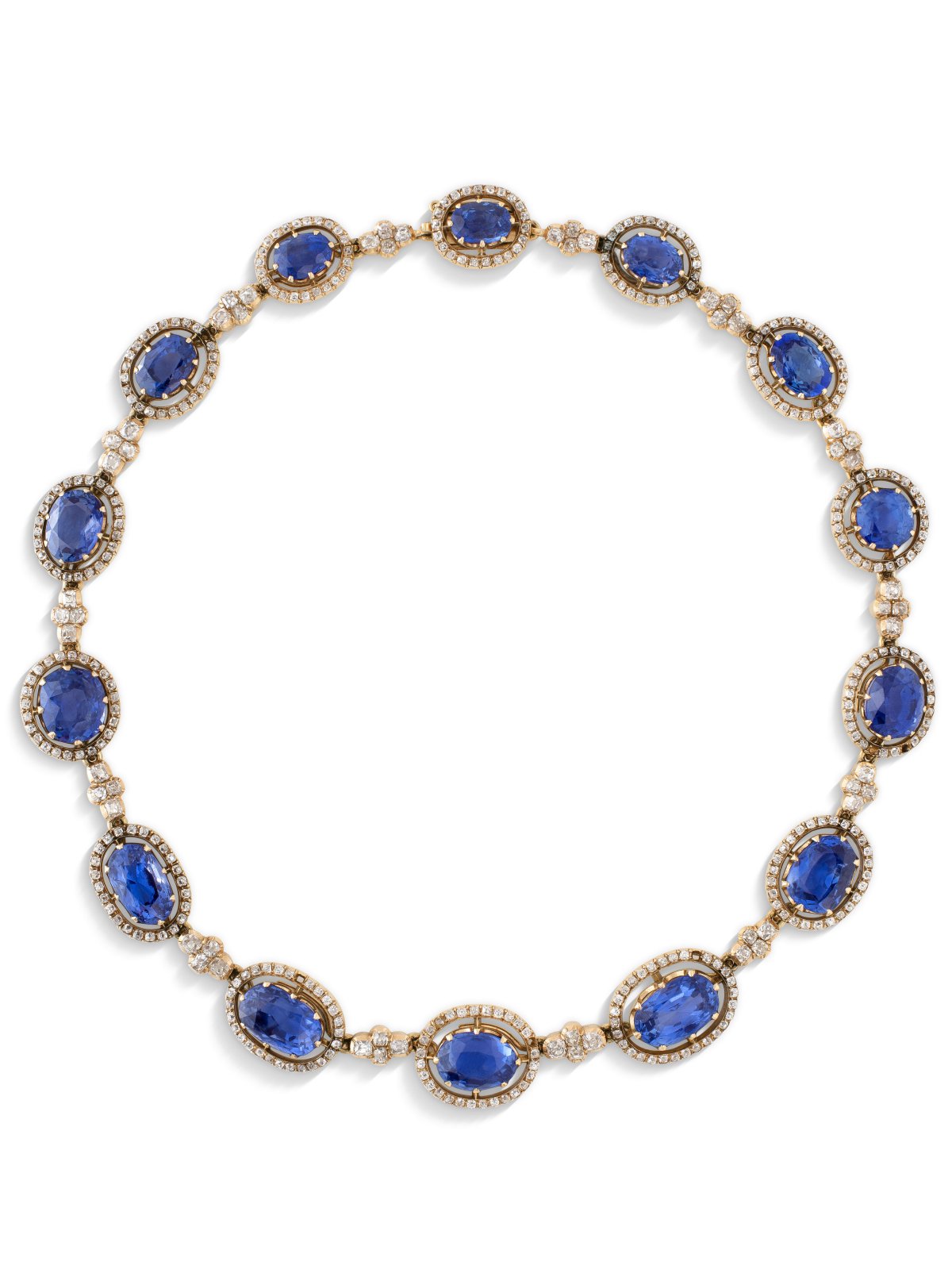
On May 14, auctioneers at Christie’s in Switzerland sold an early 20th century sapphire and diamond necklace made by Bolin, the iconic jewelry house that was located in Russia until the revolution and is now headquartered in Sweden. The lot notes described the piece as made of “oval and cushion-shaped sapphires, old-cut diamonds, [and] gold” with “detachable sapphire links.” The experts at the auction house believe that the necklace was made in the first years of the 1900s. The piece is unsigned, but it bears the maker’s mark of Vasily Finikov, one of the master craftsmen who worked for Bolin in St. Petersburg at the turn of the 20th century.
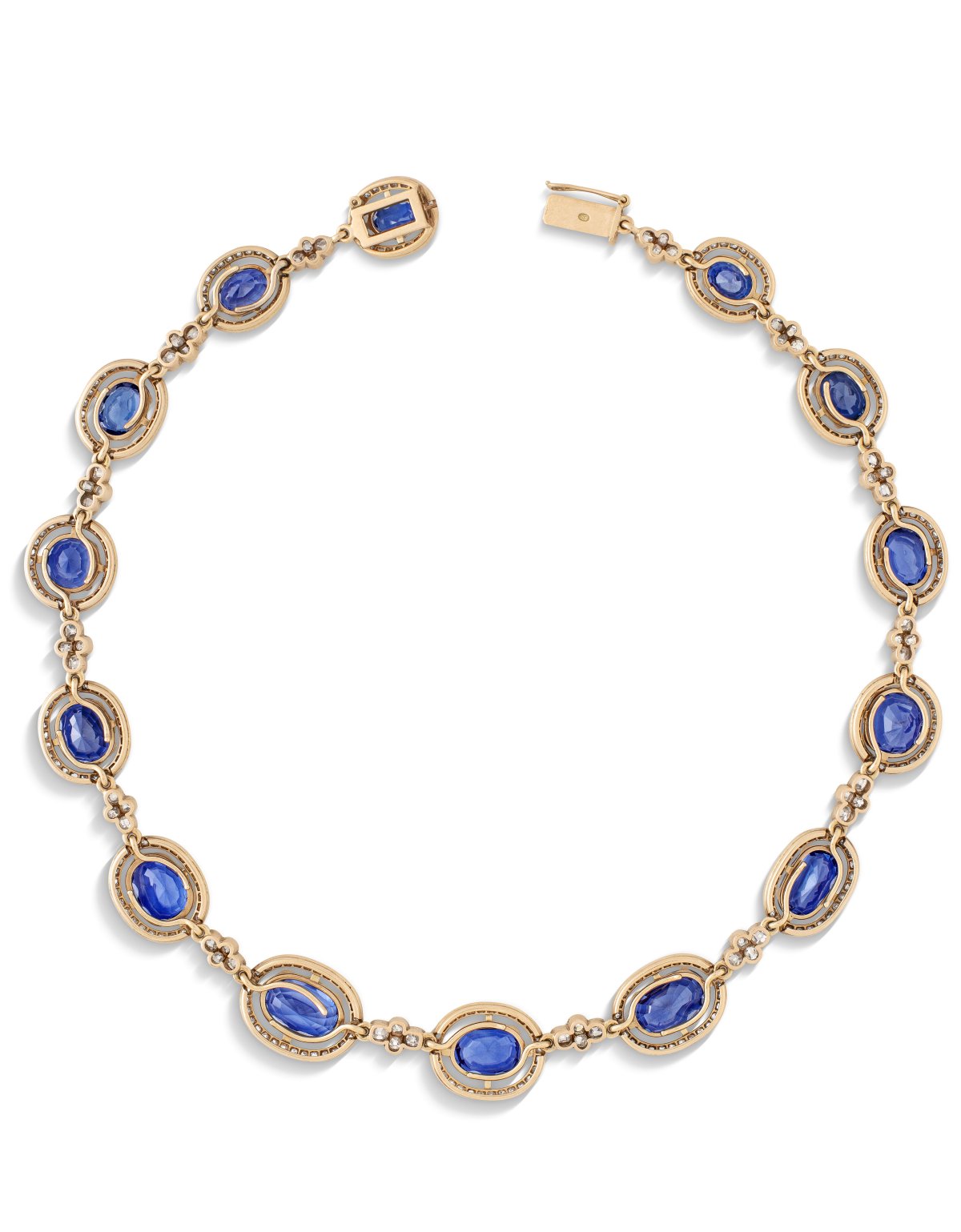
Here’s a look at the back of the necklace. The piece also includes one more clue to its origins: a scratched inventory number, “43348.” In the press materials for the auction, Angela Berden, a jewelry specialist at Christie’s, explains, “The scratched inventory number on the necklace is consistent with the numbering used by Bolin in 1904.”
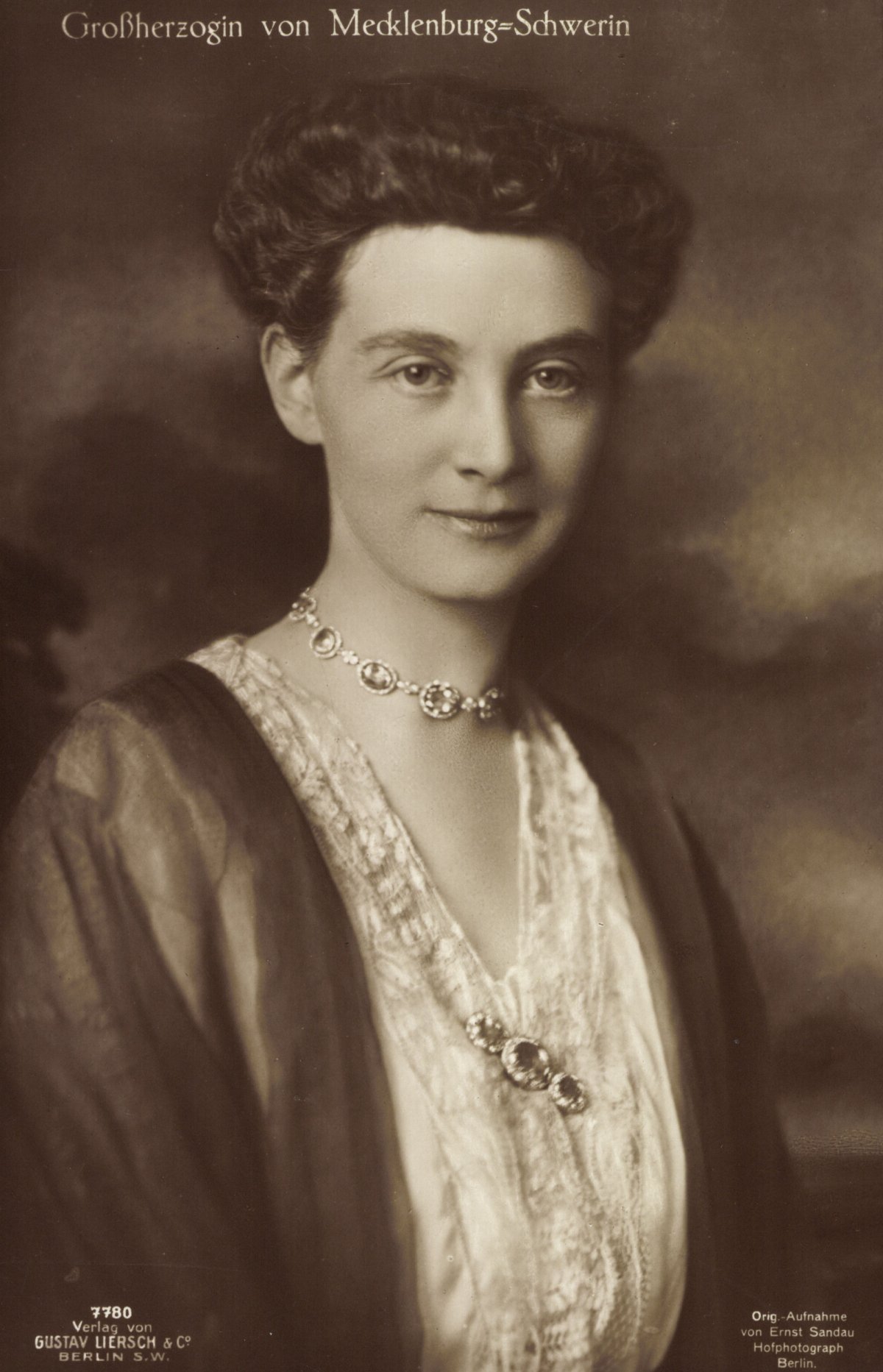
The year 1904 was a particularly important one for the woman who owned the necklace: Princess Alexandra of Hanover and Cumberland. In June 1904, Alexandra married Grand Duke Friedrich Franz IV of Mecklenburg-Schwerin in a glittering ceremony near the home of her parents, the last Crown Prince and Crown Princess of Hanover, in Gmunden, Austria. The wedding, though still festive, was slightly more muted than originally attended, as one of Alexandra’s Hanoverian royal aunts had died shortly before the wedding day. Mourning was briefly suspended to allow the wedding to proceed largely as planned.
It’s possible that the diamond and sapphire necklace was one of Alexandra’s wedding gifts. She wears the jewel in the postcard portrait above, which was taken several years after her marriage. Though Alexandra was a German princess—and, at that point, still a member of the British royal family, as a Hanoverian royal great-great-granddaughter of King George III—a wedding present from St. Petersburg makes sense, given her extensive ties to the Romanovs.
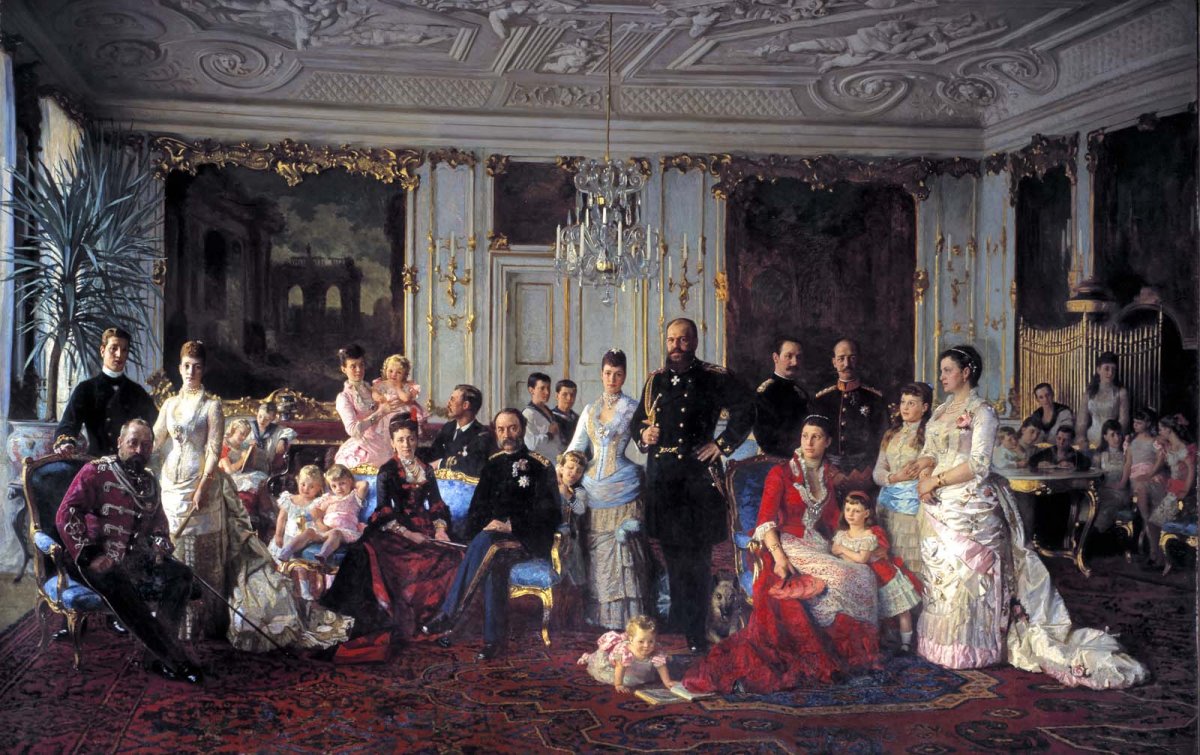
Indeed, Alexandra was probably one of the best-connected princesses in Protestant Europe. Both of her grandfathers, King George V of Hanover and King Christian IX of Denmark, were monarchs, and her aunts and uncles included King Frederik VIII and Queen Lovisa of Denmark, King Edward VII and Queen Alexandra of the United Kingdom, King George I and Queen Olga of the Hellenes, and Emperor Alexander III and Empress Marie Feodorovna of Russia.
As part of the big, closely-knit family of King Christian IX of Denmark, Alexandra was also close to her royal cousins. These included King Christian X of Denmark, King Haakon VII and Queen Maud of Norway, Princess Ingeborg of Sweden, King George V of the United Kingdom, King Constantine I of the Hellenes, and Emperor Nicholas II of Russia, among numerous others. Princess Alexandra is one of the young children pictured in the famed Laurits Tuxen portrait of Christian IX’s family, painted in the mid-1880s.
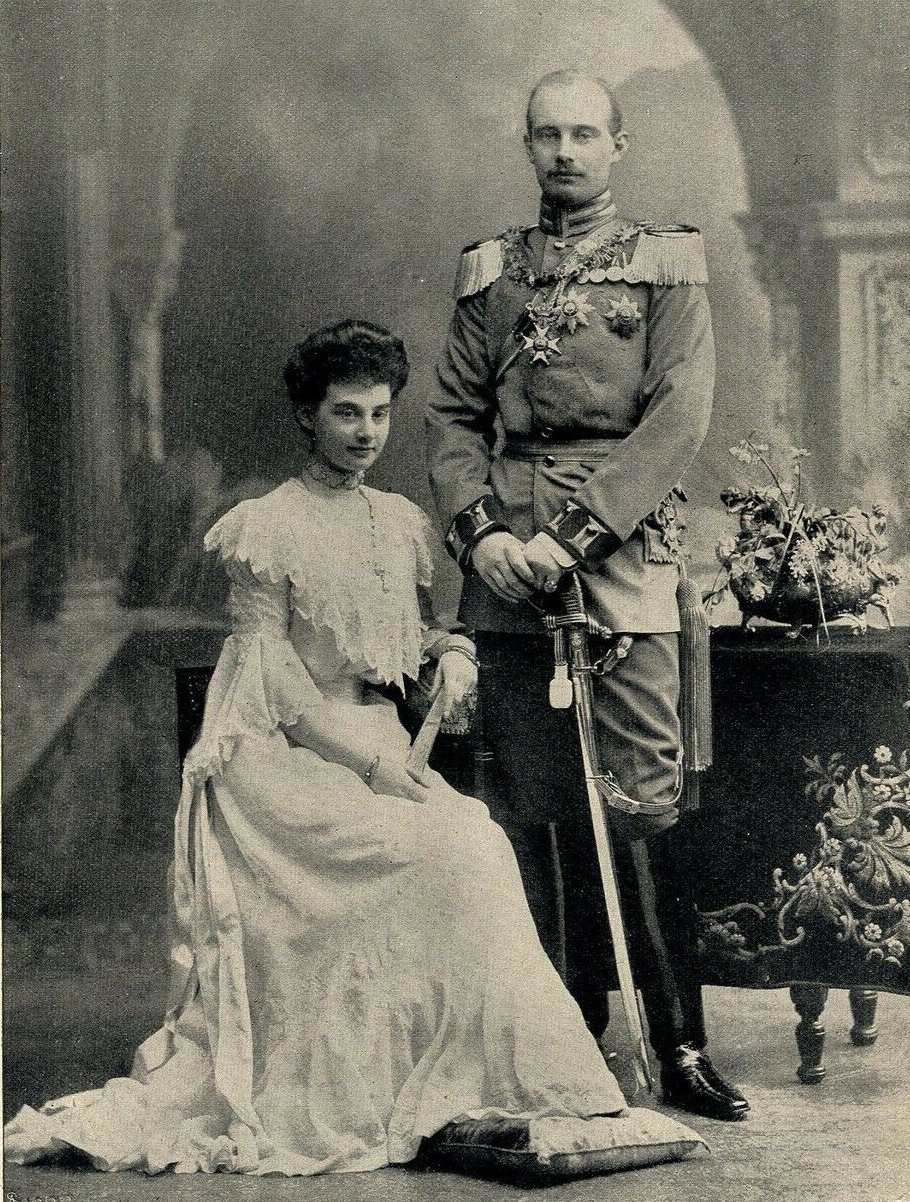
When Alexandra married Friedrich Franz IV, the reigning Grand Duke of Mecklenburg-Schwerin, her ties to the Russian imperial family became even stronger. Along with her aunt and cousin, Empress Marie Feodorovna and Emperor Nicholas II, Alexandra was now the daughter-in-law of Grand Duchess Anastasia Mikhailovna of Russia, who was a granddaughter of Emperor Nicholas I. Her new husband’s aunt also happened to be Grand Duchess Maria Pavlovna of Russia, better known to us as Grand Duchess Vladimir, who was one of Bolin’s best customers.
It’s certainly possible, of course, that a family member who wasn’t part of the Romanov line acquired the necklace for Alexandra, or perhaps another friend or associate. But a gift of this caliber certainly seems reminiscent of wedding gifts purchased by Romanov women over the years.
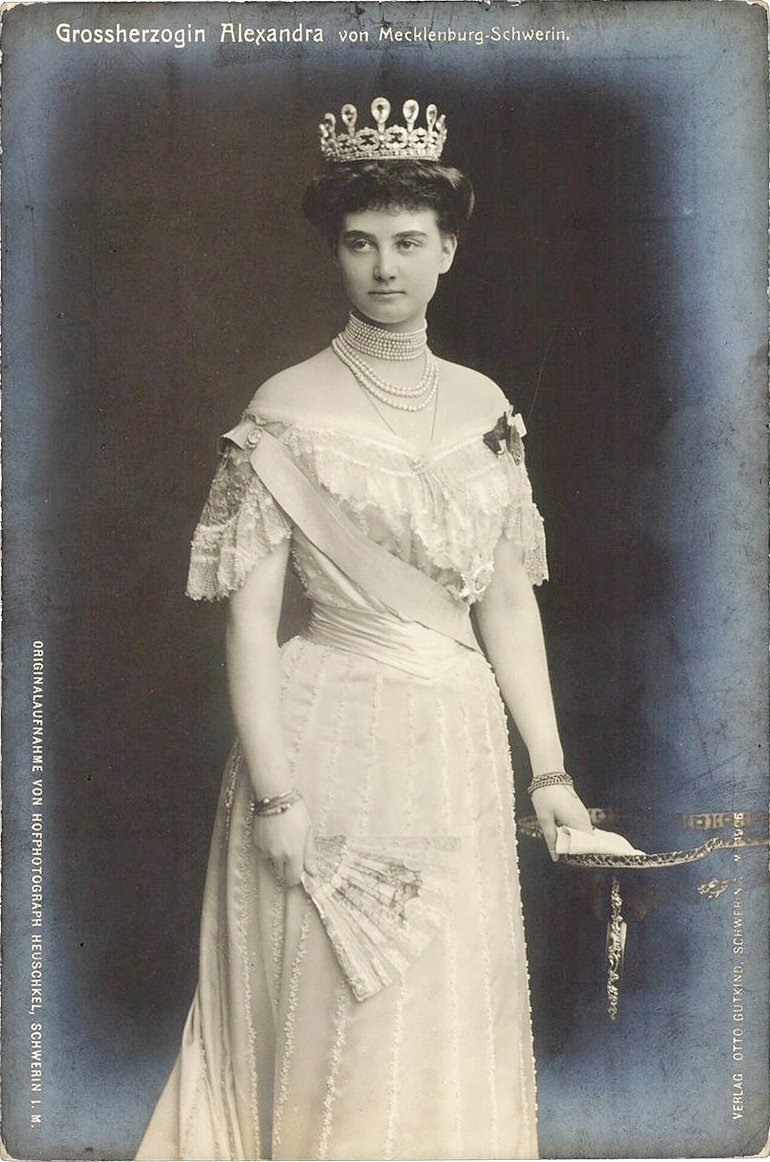
Princess Alexandra’s wedding gift jewelry haul was certainly fit for the wife of a reigning Grand Duke. Among her other presents was a spray of diamond brilliants, meant to be worn as a hair ornament, from her uncle and aunt, King Edward VII and Queen Alexandra. And her new husband, with the help of his mother, provided Alexandra with a stunning new tiara to celebrate their marriage. The jewel, made of diamonds and aquamarines, was purchased from Fabergé and delivered to the new Grand Duchess shortly after the royal wedding in 1904.
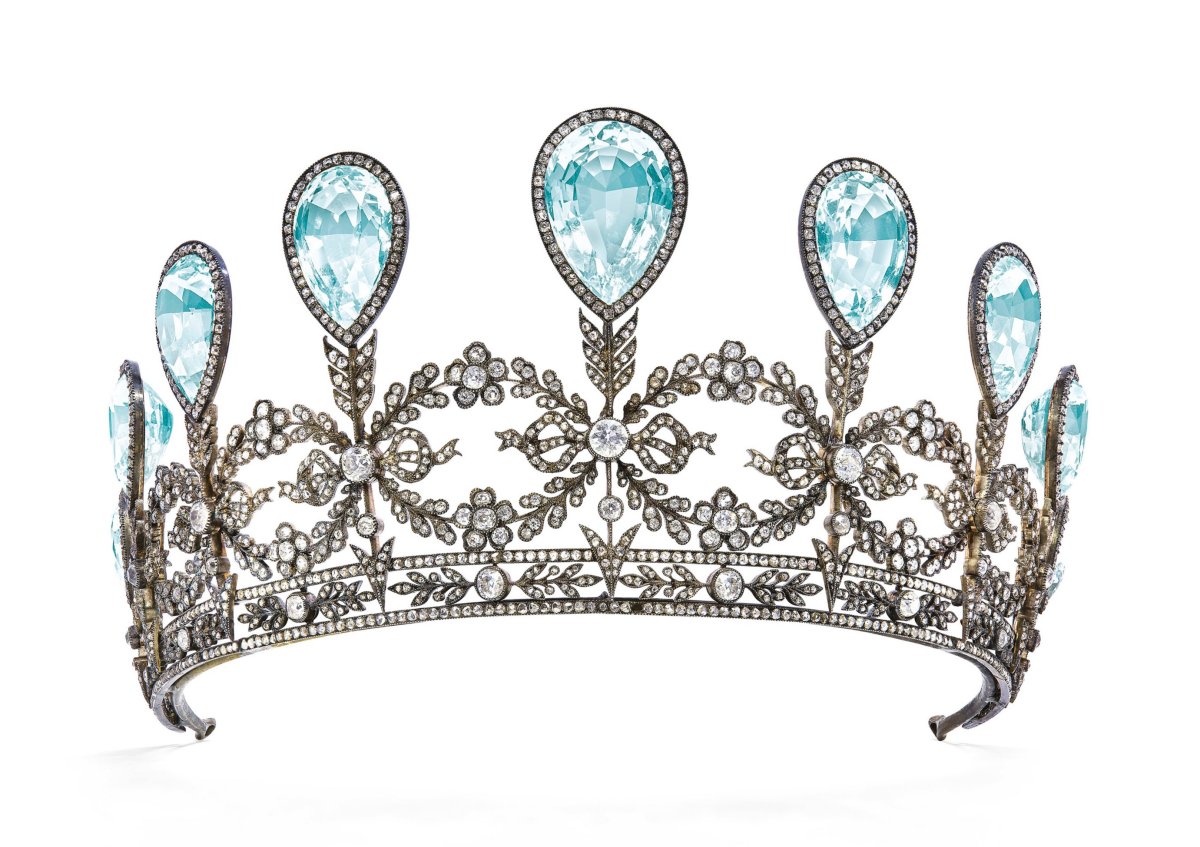
The tiara stayed in the family for more than a century, until its sale in another auction at Christie’s in Geneva in 2019. Happily, the piece was purchased by Dorothy McFerrin, who owns one of the largest private collections of Fabergé in North America. The tiara is now on display with other pieces from the McFerrin collection at the Houston Museum of Natural Science.
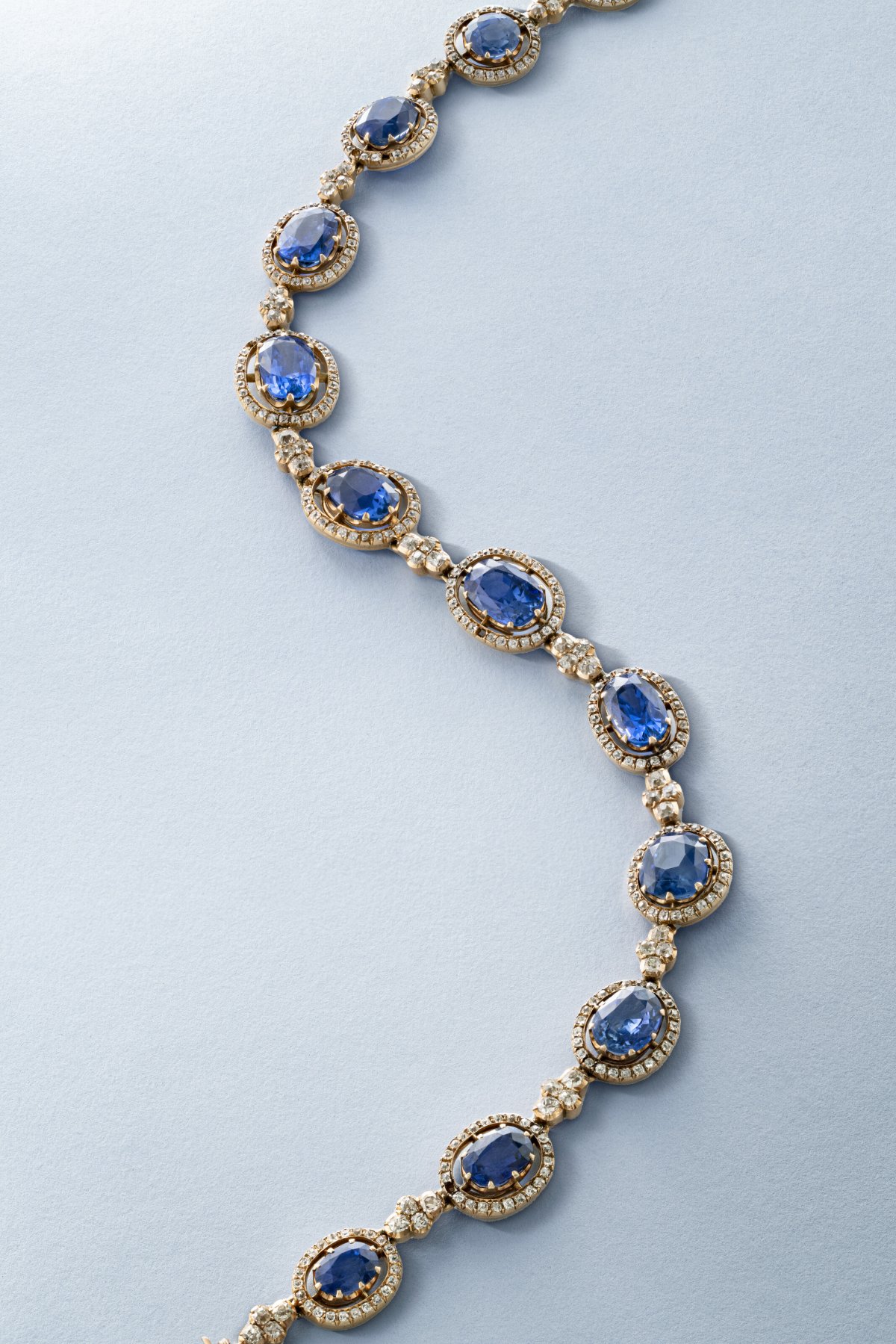
But what about the sapphire necklace? We don’t yet know who bought the piece, which has also remained with Friedrich Franz and Alexandra’s descendants until this month’s sale. We do know the price that it realized at auction: 352,800 Swiss francs (or about $428,000 USD), significantly exceeding the estimate set for the jewel.
Leave a Reply
You must be logged in to post a comment.